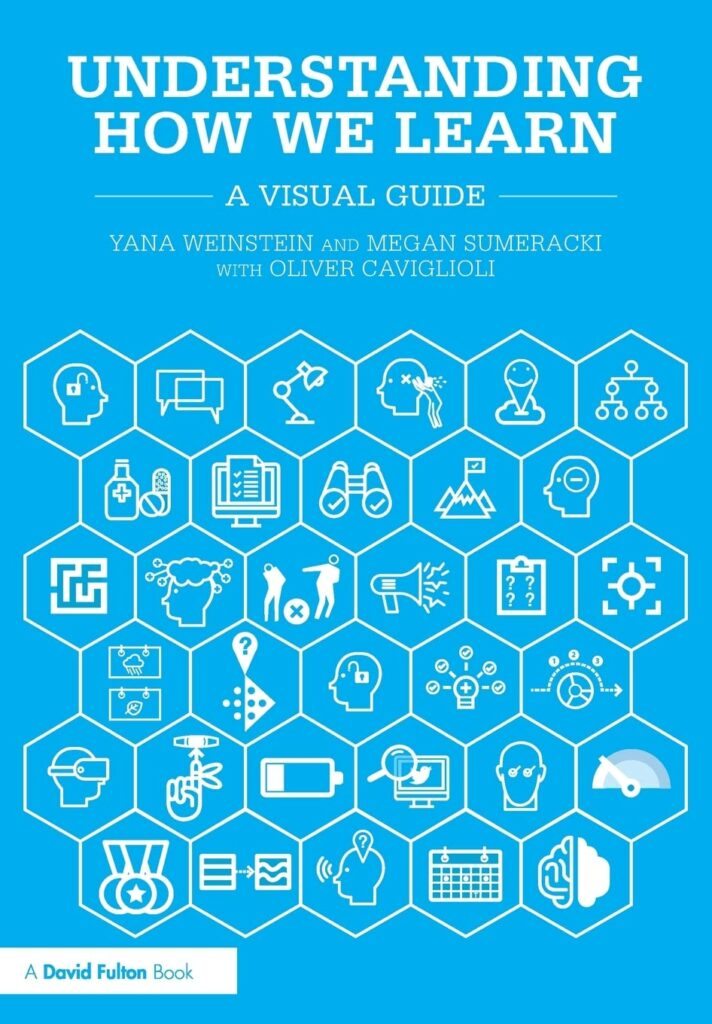A Visual Guide
By Yana Weinstein and Megan Sumeracki, with Oliver Caviglioli
We read this book for EDUC 421: Assessment and Motivation during block 2 of the program. The 3 part book goes over the science of learning, basic cognitive processes, and strategies for effective learning.
Although with lots of information about perception and attention, I learned a lot about how the brain functions and moves information from the short-term or working memory into long-term memory by reading this book. For example, working memory only holds information for about 15-30 seconds so, to avoid cognitive overload, this needs to be considered when teaching. There are also different types of memory. Declarative memories are ones that can be voluntarily accessed and described. Procedural memories are demonstrated through actions that occur without thinking about them.

Effective learning strategies that are covered in this book include spaced practice, retrieval practice, interleaving, elaboration, concrete examples, and dual coding. These methods can be applied to any subject in the classroom and can easily be implemented by teachers, not just when students are studying at home. The methods are based on how the brain functions, rather than on intuition. Effortful retrieval shows significantly better results than study techniques that feel easy, such as re-reading a text. Text fluency is not the same as mastery of content. Understanding how we learn and applying it in lessons will positively benefit students’ long-term retention of learning.

Leave a Reply